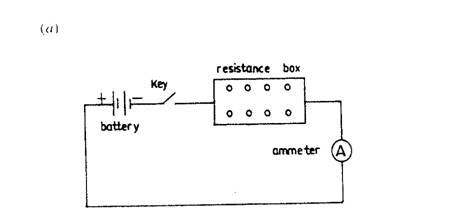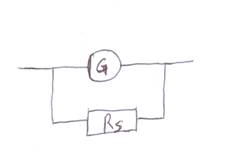Question 3B


Observation
This was another popular question among the candidates and satisfactory readings were obtained. The challenges encountered by the candidates were in the plotting of the graph and interpreting it because of the small values got from the evaluation of the reciprocal of I. Precautions are well stated.
Part (b). Most candidates were able to explain the electromotive force of a cell but could not explain how a galvanometer may be adapted to read as an ammeter satisfactorily.
Candidates were expected to:
Read and record value of Io to at least 1 d.p in Ampere
- Evaluate Value of Io-1 to at least 3 s.f.
- Read and record five values of I to at least 1 d.p in amperes and in trend.
Trend:
- as R increases, I decreases
- Evaluate five values of ![]() to at least 3 s.f
to at least 3 s.f
- List R, I and ![]() in composite table
in composite table
- Distinguish both axes
- Plot graph using appropriate scales
- Draw line of best fit
- evaluate slope, intercept and k =![]()
- state any two of the following precautions:
Key opened when readings are not being taken
Ensured clean / tight connections
Noted/adjusted/corrected zero error of ammeter
Avoided parallax error on ammeter
Repeated readings shown on the table
The expected answers for part (b) are:
b(i) The electromotive force of a cell is the work done in driving a unit of electric charge round a complete circuit
OR
The electromotive force of a cell is the terminal potential difference across a cell when it does not supply electric current to an external resistor.
OR
The emf of a cell is the total energy per coulomb of charge obtained from a cell

G = Galvanometer , S = Shunt or low resistor wire
